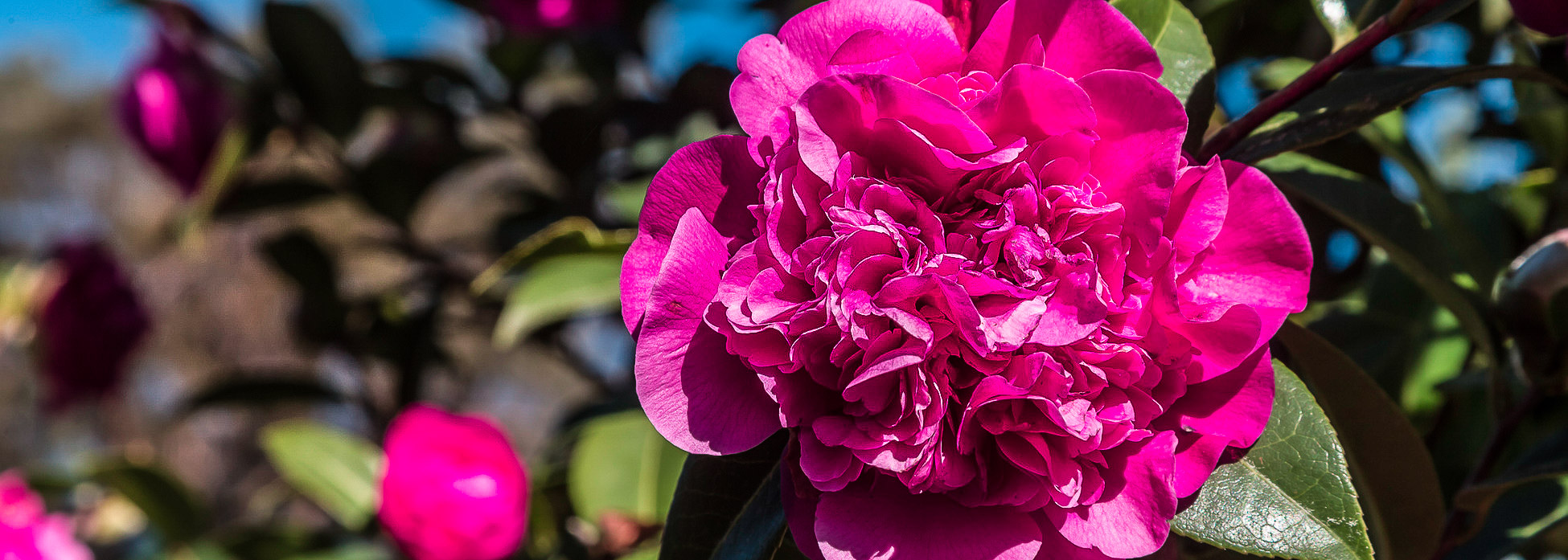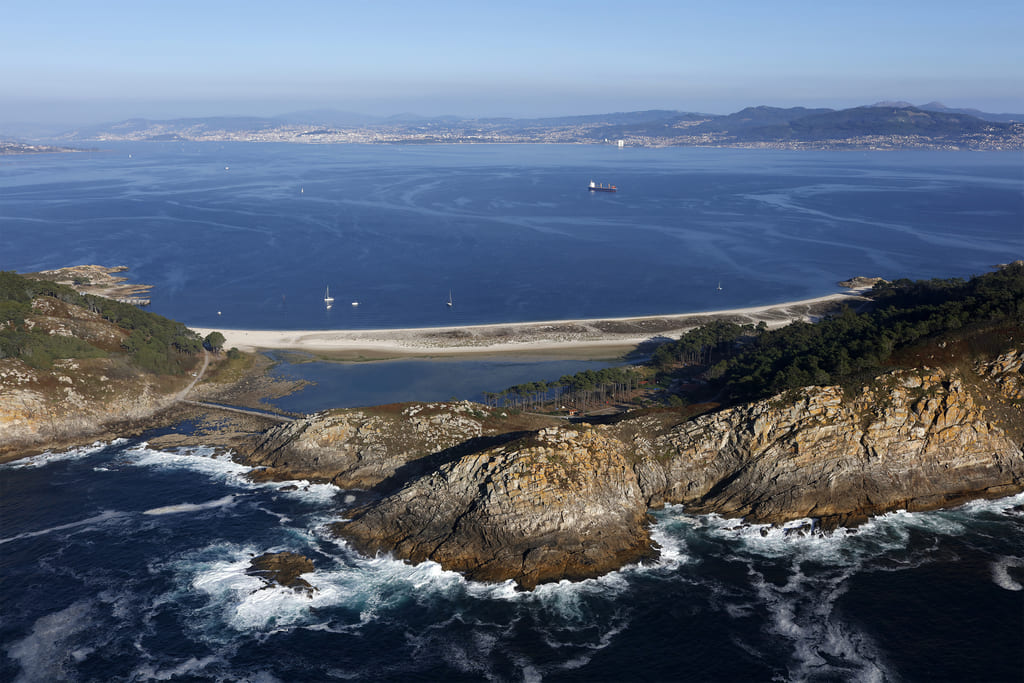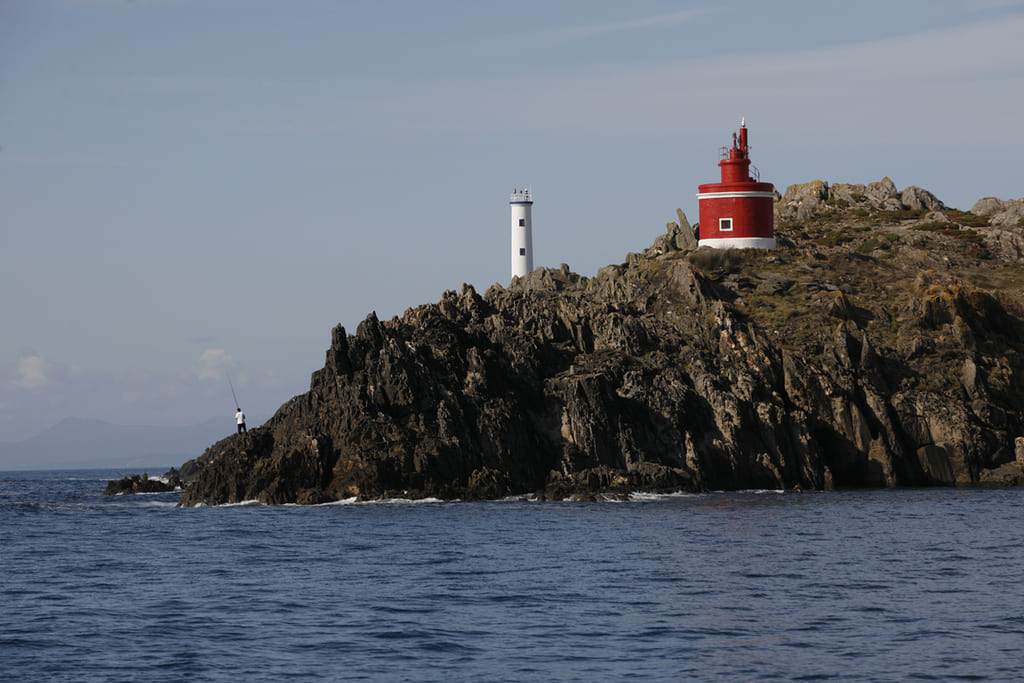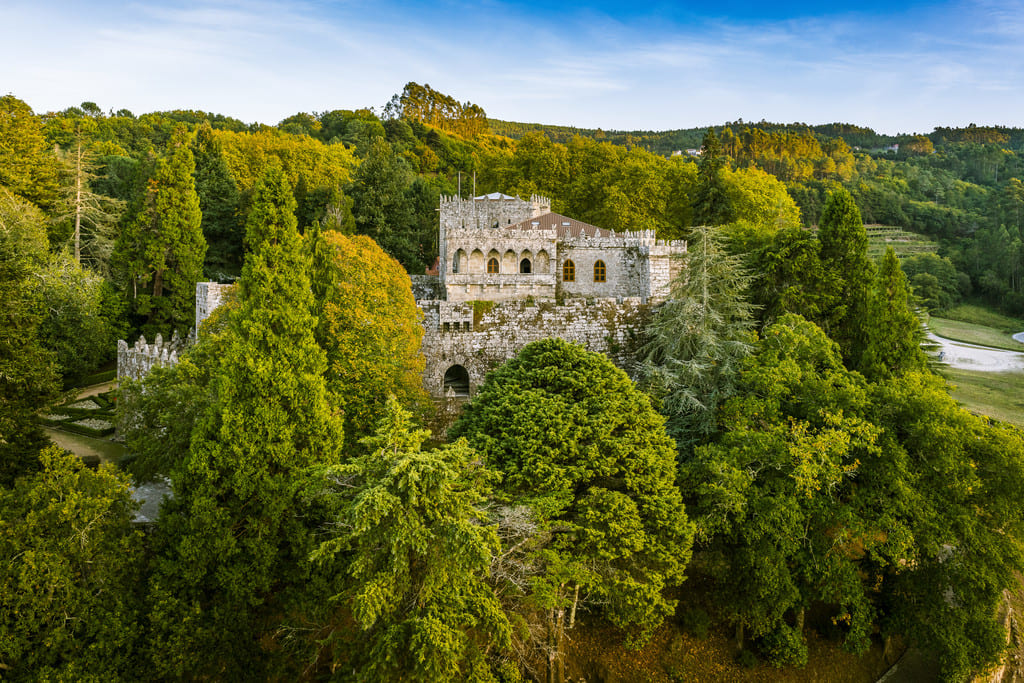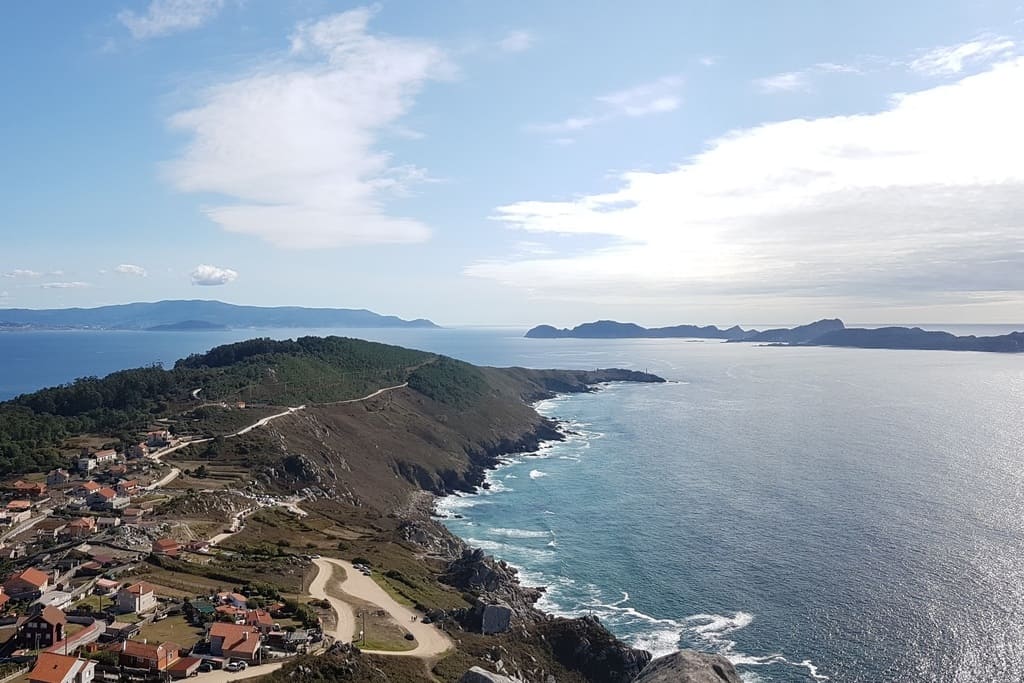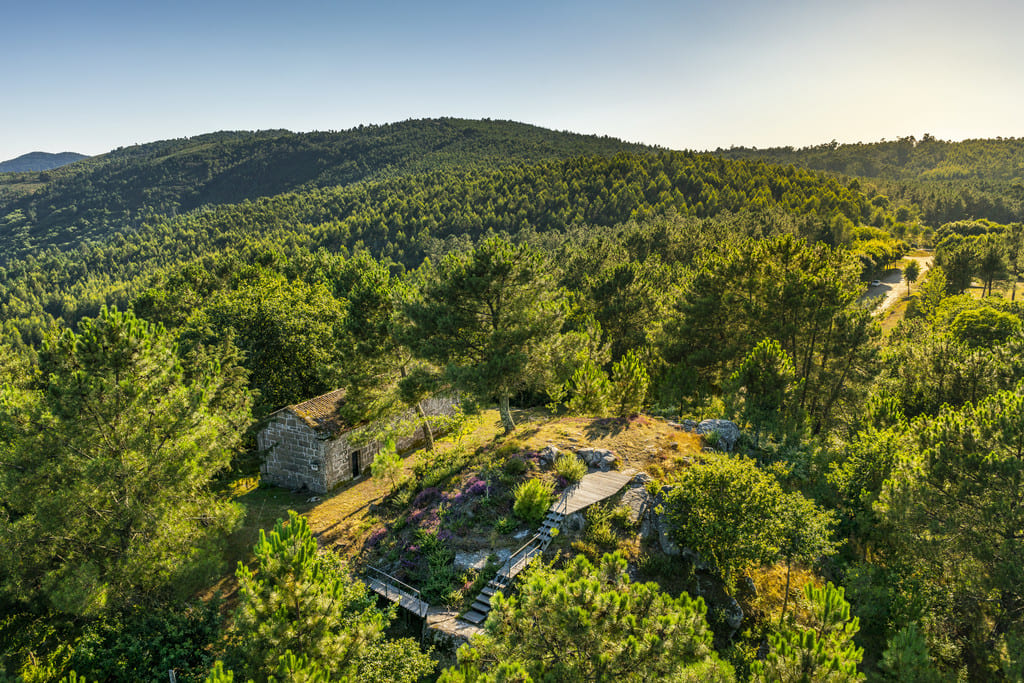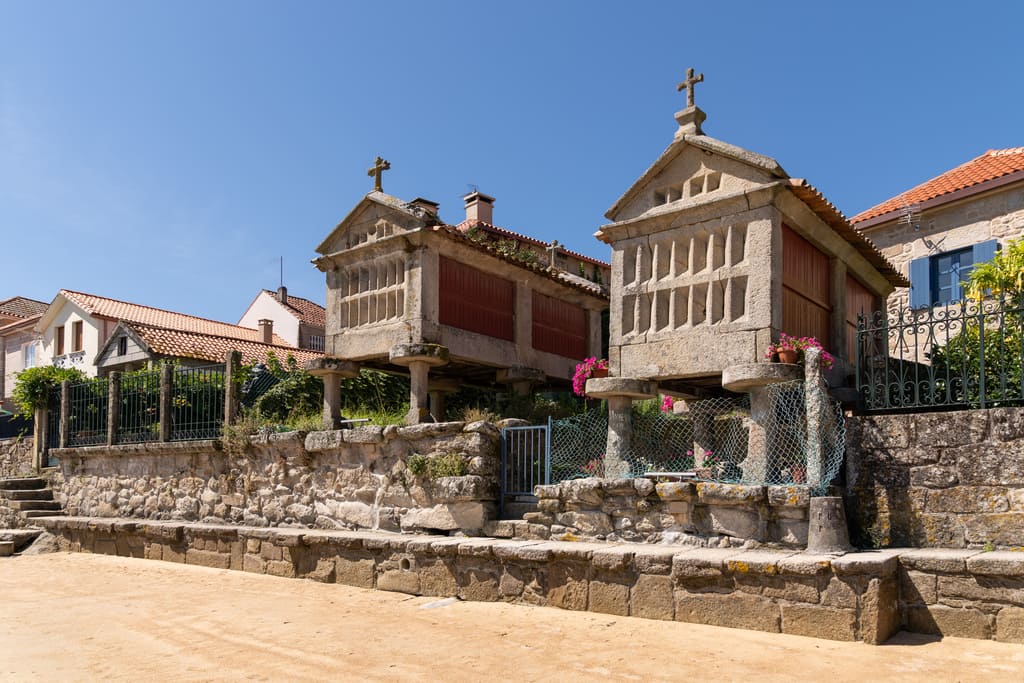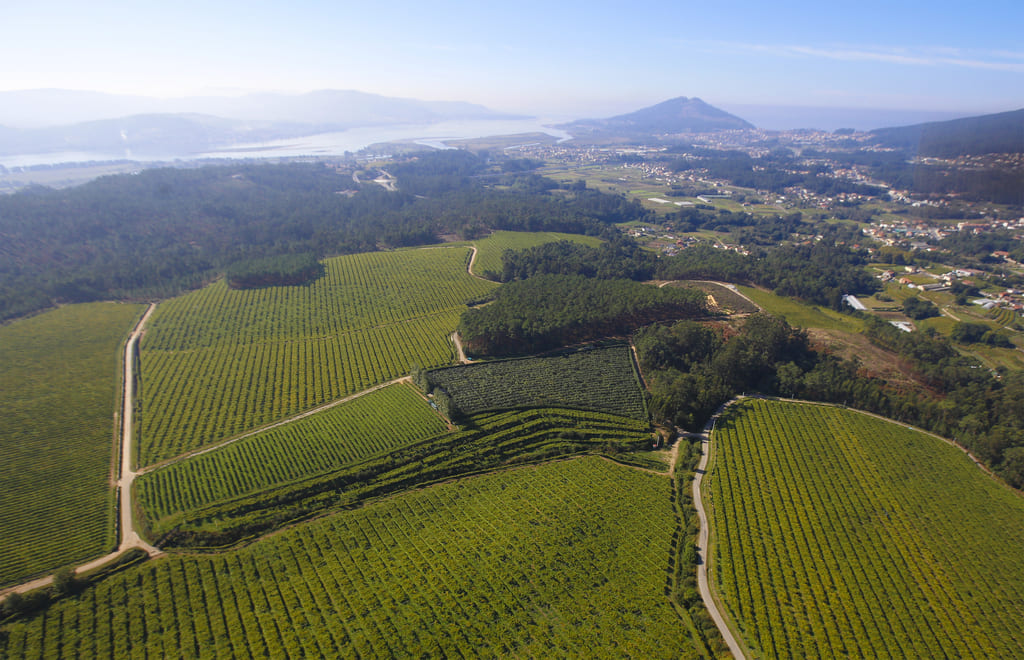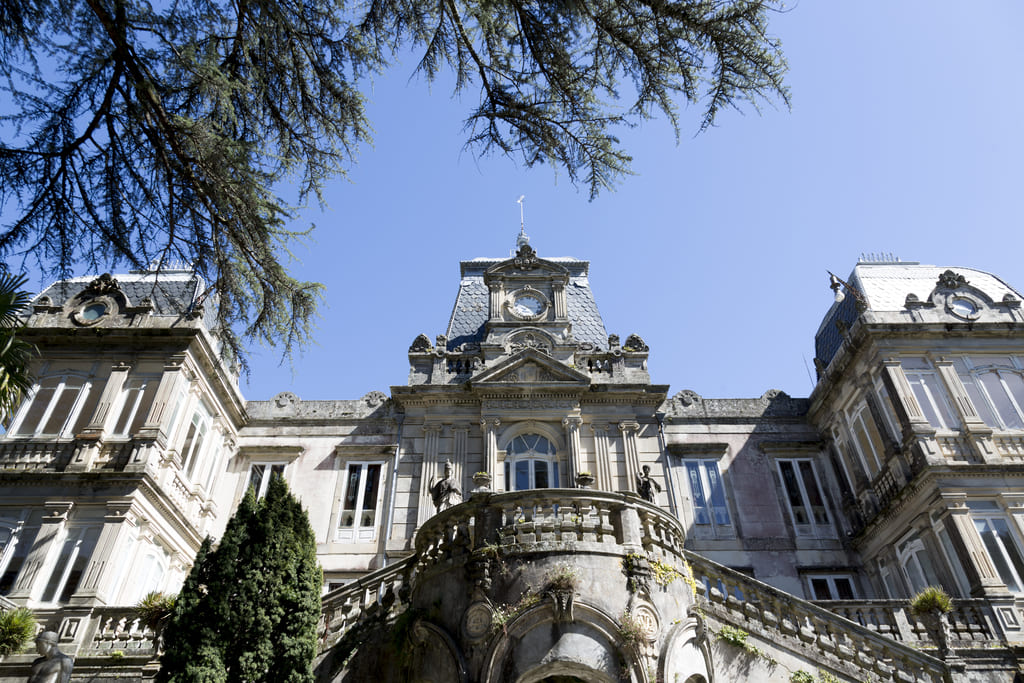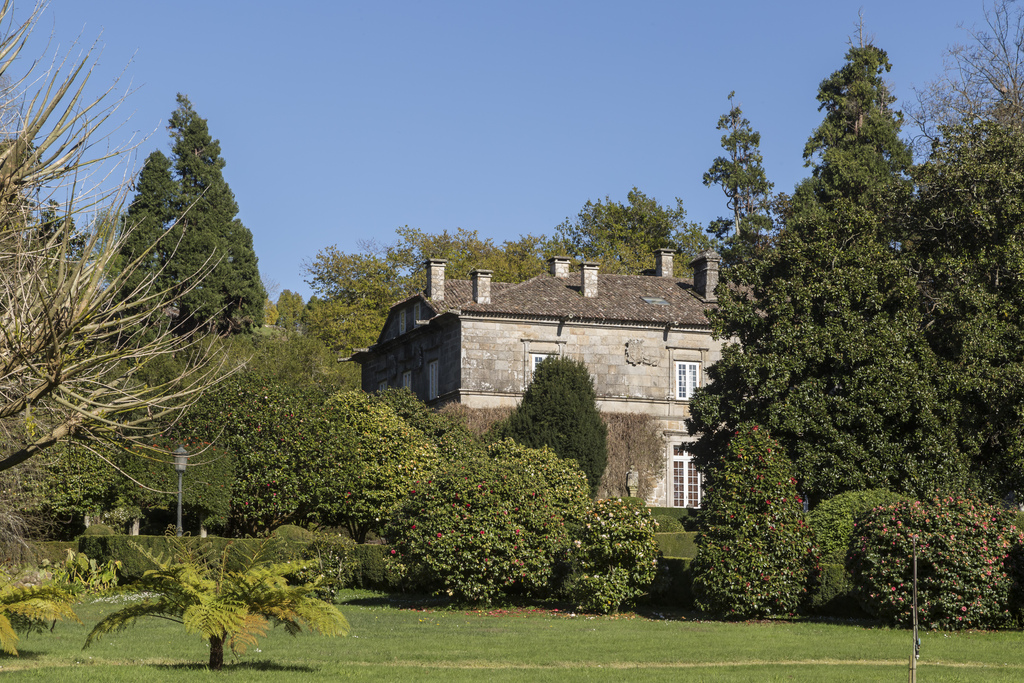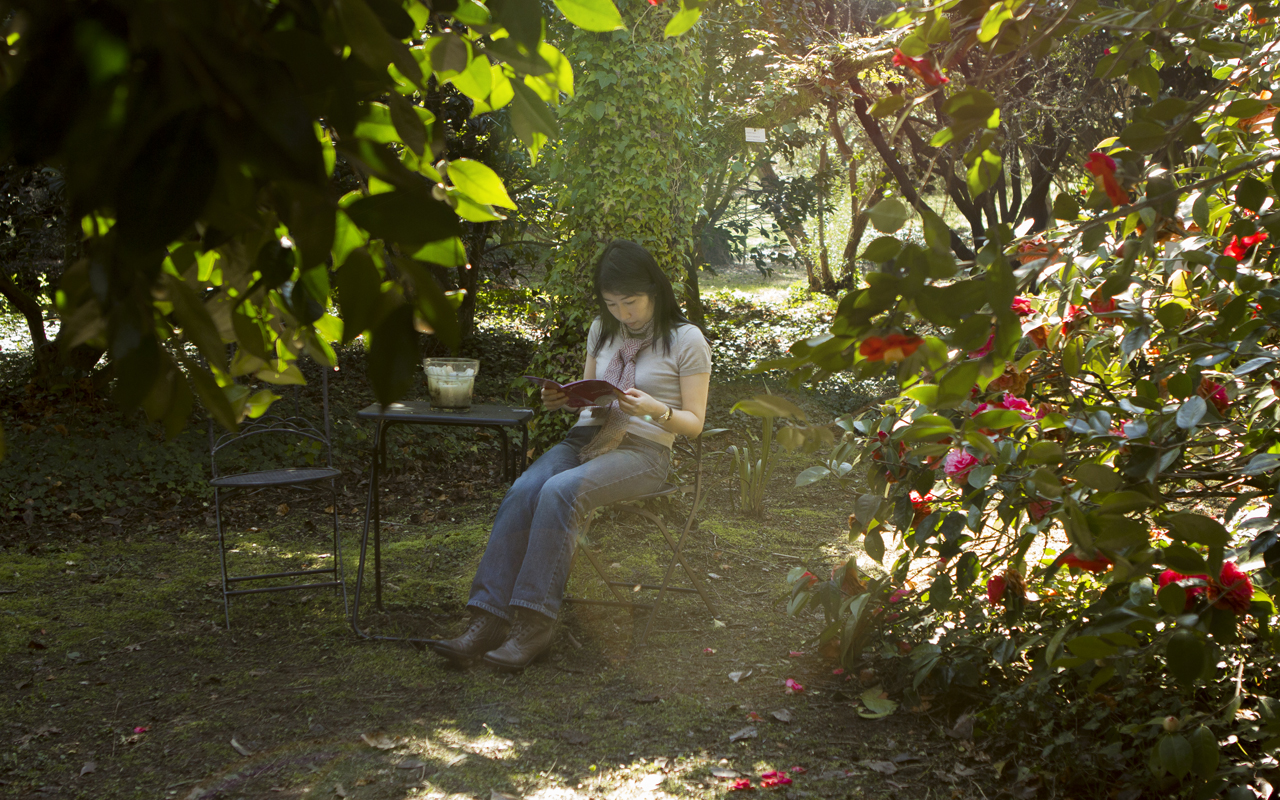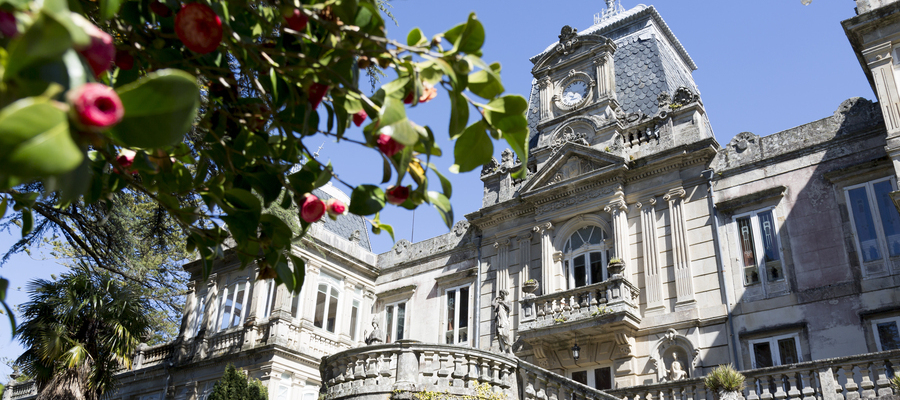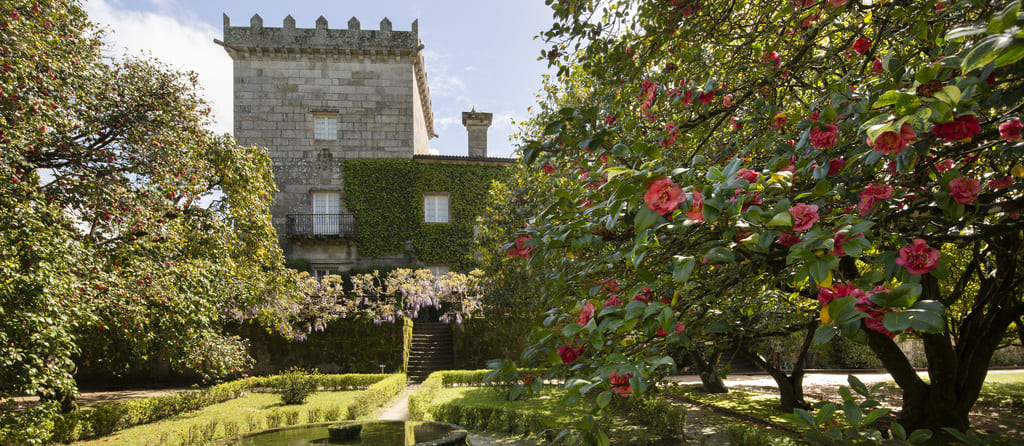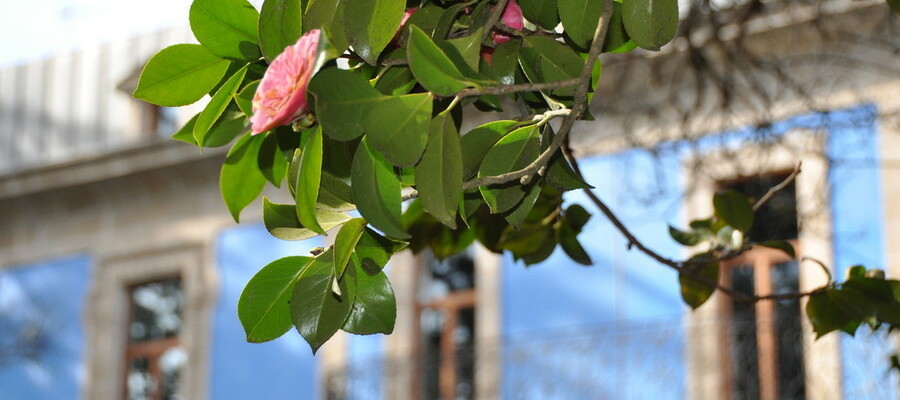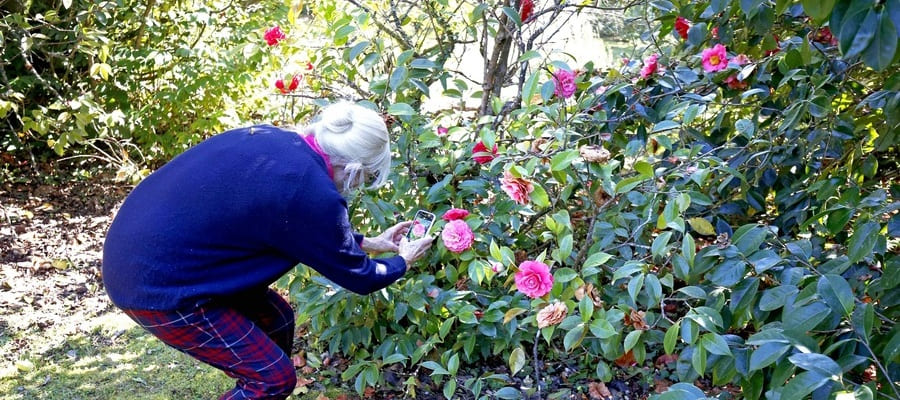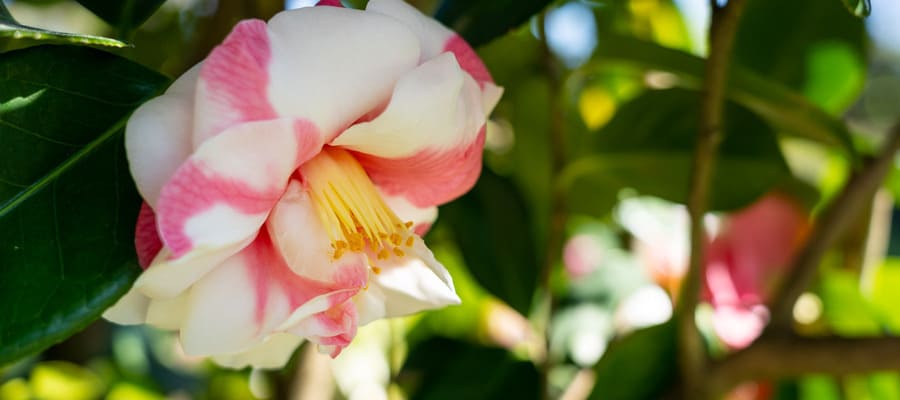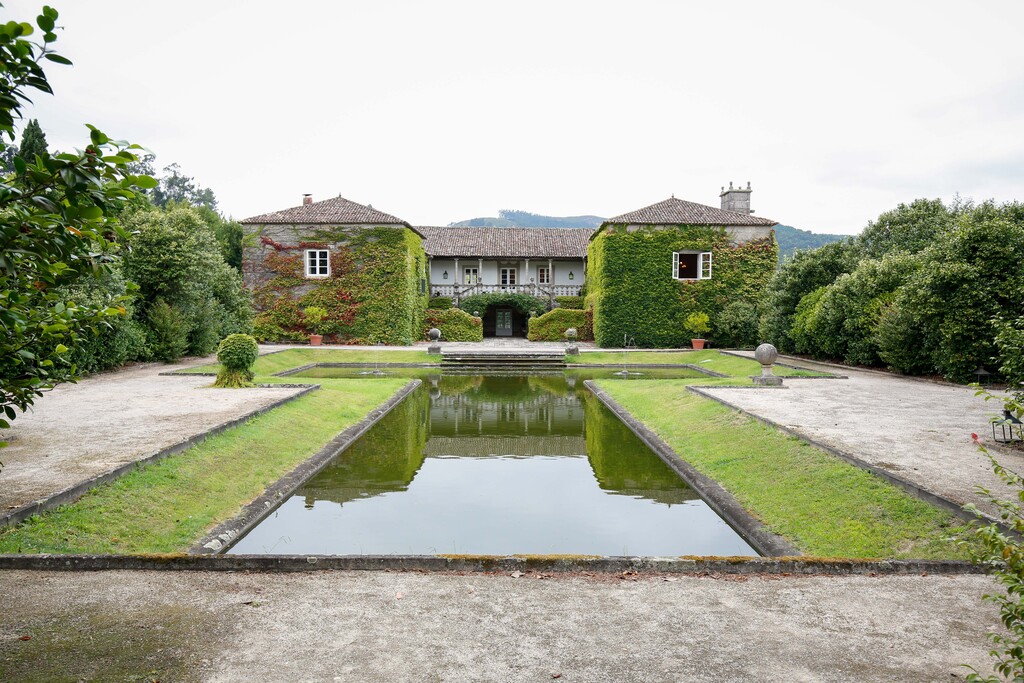Manor houses, castles, parks... The Route of the Camellia will show you true botanical paradises in the Rías Baixas. This flower from the East, introduced in the province of Pontevedra three centuries ago, can still be seen growing next to beautiful historic buildings and in public gardens. If you follow this route, you will have the opportunity to discover thousands of camellias boasting a great variety of colours.
The province of Pontevedra is a sprawling camellia garden that puts on a dazzling display in the autumn, spring and especially in winter, when these trees are in full bloom. They accompany us as we stroll along the streets, squares and gardens, manor houses popularly known as pazos, castles and monasteries… We can say that the beautiful camellias are part of the history and culture of the province of Pontevedra. They are ornamental trees whose serene beauty catches the eye of the beholder.
Native to the East, they were introduced in Pontevedra in the 17th century from Portugal. They adapted extremely well to the cultivation conditions of As Rías Baixas: well-drained acid soils with a certain degree of humidity in the air. There are more than 80 species and 30,000 different varieties, depending on the size, shape, colour, petals or leaves, among other features. We invite you to come and gaze closely at these delicate flowers and discover the unique beauty of each one – the beauty that is at once so inspiring and magical.
The Route of the Camellia is an invitation to discover true botanical paradises in As Rías Baixas, as we stroll along majestic castles and pazos and natural parks. In fact, four of these gardens are listed as International Camellia Gardens of Excellence by the International Camellia Society.
Soutomaior Castle
This castle, half medieval fortress and half neo-Gothic palace, is the gem of the fortified heritage of As Rías Baixas. It boasts a wonderful 25-hectare estate in which the flower from the East stands out, giving a touch of colour to the landscapes of the province of Pontevedra. This botanical treasure has been recognised as an International Camellia Garden of Excellence since 2012, and is the first in Spain to receive such an award.
Camellia flowers are the main attraction in the gardens of this majestic castle, whose collection keeps growing every year. It has more than 400 camellias, of which 18 specimens from the 19th century stand out (among them the Camellia japonica with the largest perimeter in Galicia). The collection is growing every year thanks to the Deputación de Pontevedra. An example of this continuous innovation is the Garden of Camellias with a Woman's Name, a project that started planting the camellia named after María Vinyals and 72 specimens of the tea plant, Camellia sinensis, which are now growing in the garden.
Moreover, in this space it is possible to find other tree species from the five continents, such as the monkey puzzle tree, the sequoia, the Japanese cedar, the Spanish fir or the London planetree.
Pazo de Rubianes
A beautiful French-style garden welcomes visitors to this historical pazo in the region of Salnés. More than 4,000 camellia specimens are growing in the garden, which was designated International Camellia Garden of Excellence in 2014. One of the botanical gems of the garden are the group of 19th century camellias donated by the Duke of Caminha (Portugal). Today, the queens of the garden are about 800 varieties belonging to the species Camellia sasanqua , Camellia sinensis, Camellia reticulata and Camellia japonica that bloom throughout the coldest season of the year.
The estate has been dedicated to agroforestry cultivation since time immemorial and this knowledge has been passed down from generation to generation. Its outstanding camellia collection coexists with others species such as magnolias, incense cedars, Japanese red-cedars, eucalyptus, camphor, ashes, Araucaria species, as well as oaks and cork oaks , which make this place a botanical park perfect for a stroll.
Pazo Quinteiro da Cruz
Located in the very heart of the region of O Salnés, the Pazo Quinteiro da Cruz is a neoclassical style building dating from the late 18th century. It has a 7-hectare estate with French-inspired gardens designed at the end of the 19th century, surrounded by vineyards of the Albariño grape variety and by native woods.
This garden has around 5,000 specimens belonging to 1,500 varieties, and has been designated an International Camellia Garden of Excellence since 2018. Here, the specimens of Camellia japonica, Camellia reticulata and Camellia Higo stand out, having won the Golden Camellia Award at the International Camellia Show on several occasions. This botanical treasure allows you to walk among camellias and admire the beauty of this elegant flower of the province of Pontevedra.
Pazo de Lourizán
On the outskirts of the town of Pontevedra is a magnificent example of a manor house dating from the late 19th century, now dedicated to forestry research and preservation. It has a lovely, large-sized garden containing remarkable botanical species, such as a dawn redwood specimen that had previously only been found in fossil form, a majestic Japanese pagoda tree, a Dutch elm and a cedar of Lebanon that is about 180 years old.
The oldest camellias are some specimens of Camellia japonica ‘Alba Plena’, which date from the 19th century and give a touch of colour to the garden landscape, which boasts 6oo specimens of this species that bloom from November to February.
Pazo Quiñones de León
The Pazo Quiñones de León or Pazo de Castrelos, in Vigo, was built on the grounds of the old tower of Lavandeira (17th century). After belonging to different families, in 1924 it was donated to the citizens of Vigo to be turned into a museum and a public park in 1937. It comprises different areas: the rose garden, the French-style and the English-style gardens, and woods, among others.
Next to this manor house there is a specimen of Camellia japonica known as "Methuselah of Camellias", as it is around 200 years old. Among the camellia specimens growing in the garden, it is worth mentioning some cultivars of Camellia japonica, such as 'Alba Plena', 'Bella Romana', 'Federici', 'Hagoromo', 'Herzilia II', 'Incarnata', 'Kellingtonia' or 'Pomponia Portuensis', among others.
Pazo Gandarón
This pazo is found in the outskirts of the town of Pontevedra. Archbishop Malvar commissioned the construction of the Pazo de Gandarón in the late 18th century. Since 1928, it has been the headquarters of the Misión Biológica de Galicia, a research centre belonging to the Spanish National Research Council. Fountains, ponds, the hórreo (granary house) and the chapel are part of the sign of identity of the place, which has preserved its original style.
The oldest camellias were planted in the 19th century by Jerónimo Malvar. Later, Cruz Gallástegui, founder of the Misión Biológica de Galicia, enlarged the collection, and in the last half of the 20th century Antonio Odriozola contributed greatly to the cultivation and dissemination of the camellia. The most important camellia varieties planted in the garden are the Camellia japonica ‘ Fimbriata Alba’, ‘Juan XXIII’ or ‘Prince Eugene Napoleon’ , which used to stroll along the streets of Pontevedra on the lapel of Antonio Odriozola's jacket.
Pazo de A Saleta
In the region of O Salnés, in the parish of Meis, we can find another International Camellia Garden of Excellence: the Pazo da Saleta. This manor house holds one of Spain’s most important private botanical gardens boasting both native and exotic species from the five continents. Moreover, this English-style garden forms a part of the Les Belles Maisons, an exclusive collection of privately owned houses for special events.
The garden includes more than 300 camellia specimens that belong to Camellia japonica , C. reticulata and C. x williamsii . A chapel, a hórreo (raised granary), a manor house, a pigeon house, an oak wood, a pond and the Australian jungle make this one of the most special gardens in the province of Pontevedra.
Pazo de Oca
Pazo of Oca is the oldest manor house in Galicia. The most important elements are the Chapel of San Antonio, the pazo – in which an imposing crenellated tower and several coats of arms stand out – and the stunning gardens, with both vegetable and ornamental gardens. It is known as the Galician Versailles due to the exceptional quality of its baroque style gardens, of which the romantic garden, the geometric garden and the labyrinth deserve to be highlighted. Here, the water flows through ponds with stone rowboats, fountains, streams, mills, wells, and canals, and is considered as one of the main attractions in the garden.
In the geometric garden, there is a specimen of Camellia reticulata ‘Capitain Rawes’ with deep red flowers. It is about 170 years old and 11 metres tall, and so it is considered the oldest and largest camellia tree in Europe. It is indisputably the crown jewel of camellias in As Rías Baixas. This garden also has hundreds of camellias of different sizes, species and colours that catch the eyes of those who visit the garden.
Park of O Castro
This park – the highest point in the centre of the city of Vigo – is an extraordinary botanical garden that offers excellent views of the port and the coastal inlet (ría). It boasts exotic plant species of great ornamental value and size, as well as the remains of a pre-Roman hillfort settlement dating from the 3rd to the 1st century BC.
There is an outstanding camellia collection scattered around the garden and most of them were originated in Portugal; this is the case of the varieties 'Dona Jane Andresen', 'Angelina Vieira' or 'Pomponia Estriata Portuensis', among others.
.
Pazo Pegullal
Pazo de Pegullal dates from the 18th century and is located in the municipality of Salceda de Caselas. This Galician manor house is surrounded by beautiful gardens, ponds and fountains. The coats of arms of the Correa, Mendoza, Quirós, Sarmiento and Sotomayor families stand out in the monumental entrance door of this magnificent manor house, which is the southernmost pazo of those included in the Route of the Camellia of the province of Pontevedra-As Rías Baixas.
The vineyards of Pazo Pegullal winery, which produces and sells its wines under the Rías Baixas Designation of Origin, can be found around the property. Moreover, the pazo also has kiwi plantations and olive groves.






